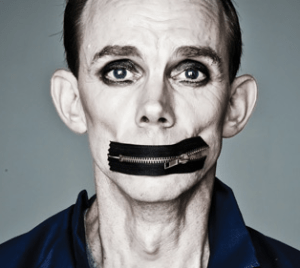Putting apprehensions to rest, Pollution Control Board (PCB) member-secretary Satyanarayana Reddy said water samples from R K Puram lake tested by the board confirmed that it was domestic waste that triggered the froth and not industrial wastes.
Reddy was speaking at ‘Save RK Puram Lake’ organized here on Sunday. He said, “It started in Bangalore and has now come to Hyderabad. We must prepare a detailed action plan to protect the lake and prosecute violators under the Environment Protection Act.”
“There is indeed, no need to get alarmed. However, at the same time, we can’t ignore the problem and allow it to get worse. We should take steps to clean it,” he added.
The program was organized by Federation of Resident Welfare Associations (FERWAS), Malkajgiri.
T Venkata Praseeda, Deputy Engineer from the Irrigation Department said the lake had shrunk due to encroachments over the years. He pointed out that the government was framing a comprehensive development plan to restore the lake to its past glory.
GHMC Deputy Commissioner, Malkajgiri Circle, Venugopal blamed release of untreated water into the lake as the leading cause of pollution.
Officials were always monitoring the lake, he said and assured the public that frothing was not a reason for alarm. “We have studied the lake and formed a plan that will cost Rs 85 lakh. We will ensure maintenance and upkeep of the lake for three years,” said Venugopal.
Environmentalists appealed to the officials not to merely treat the symptom of frothing but to also look at the cause of sewage flowing into the lake.
There is indeed, no need to get alarmed. However, at the same time, we can’t ignore the problem and allow it to get worse — Satyanarayana Reddy, PCB member-secretary
Putting apprehensions to rest, Pollution Control Board (PCB) member-secretary Satyanarayana Reddy said water samples from R K Puram lake tested by the board confirmed that it was domestic waste that triggered the froth and not industrial wastes.
Reddy was speaking at ‘Save RK Puram Lake’ organized here on Sunday. He said, “It started in Bangalore and has now come to Hyderabad. We must prepare a detailed action plan to protect the lake and prosecute violators under the Environment Protection Act.”
“There is indeed, no need to get alarmed. However, at the same time, we can’t ignore the problem and allow it to get worse. We should take steps to clean it,” he added.
The program was organized by Federation of Resident Welfare Associations (FERWAS), Malkajgiri.
T Venkata Praseeda, Deputy Engineer from the Irrigation Department said the lake had shrunk due to encroachments over the years. He pointed out that the government was framing a comprehensive development plan to restore the lake to its past glory.
GHMC Deputy Commissioner, Malkajgiri Circle, Venugopal blamed release of untreated water into the lake as the leading cause of pollution.
Officials were always monitoring the lake, he said and assured the public that frothing was not a reason for alarm. “We have studied the lake and formed a plan that will cost Rs 85 lakh. We will ensure maintenance and upkeep of the lake for three years,” said Venugopal.
Environmentalists appealed to the officials not to merely treat the symptom of frothing but to also look at the cause of sewage flowing into the lake.


 T
T The inauguration day was highlighted by Dhak Badon and Lathi Khela (a performance of Drums and stick-fight), performed by Fakir Chan and his troupe. It was followed by a pala
(dance-drama) called Behula Lakhkhinder, performed by Belal Boyati and
his troupe. Last act of the evening was a drama Aurangzeb. An intriguing
drama based on the life of the Mughal emperor Aurangzeb, the drama in a
way was a reflection of the mindset of few fundamentalists who opposed
the festival.
The inauguration day was highlighted by Dhak Badon and Lathi Khela (a performance of Drums and stick-fight), performed by Fakir Chan and his troupe. It was followed by a pala
(dance-drama) called Behula Lakhkhinder, performed by Belal Boyati and
his troupe. Last act of the evening was a drama Aurangzeb. An intriguing
drama based on the life of the Mughal emperor Aurangzeb, the drama in a
way was a reflection of the mindset of few fundamentalists who opposed
the festival. 












